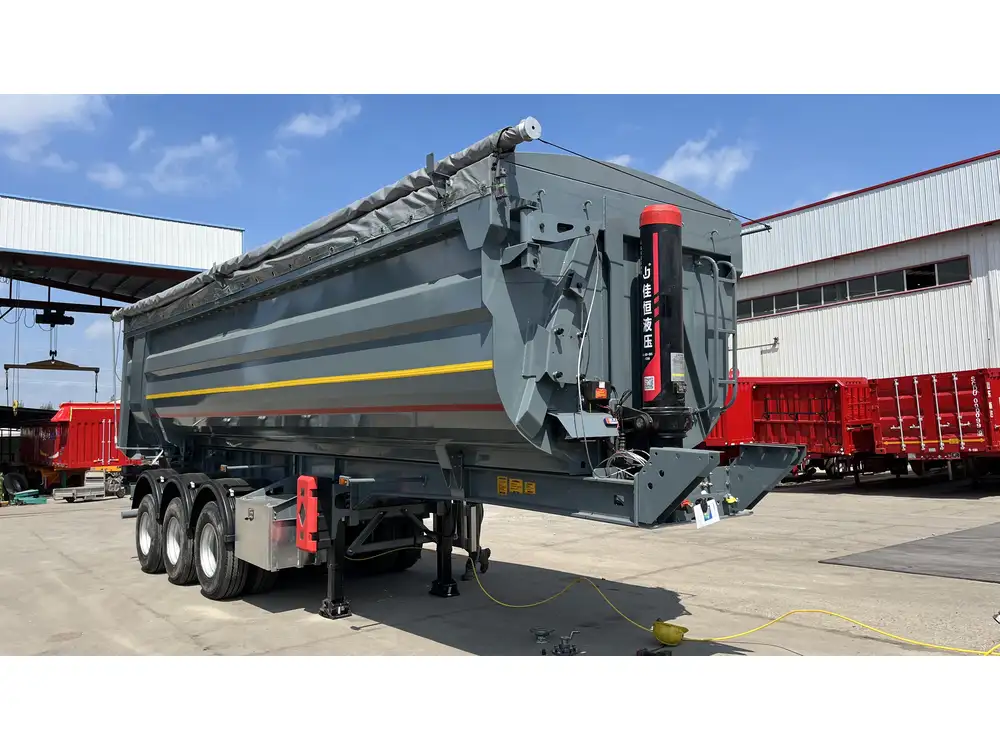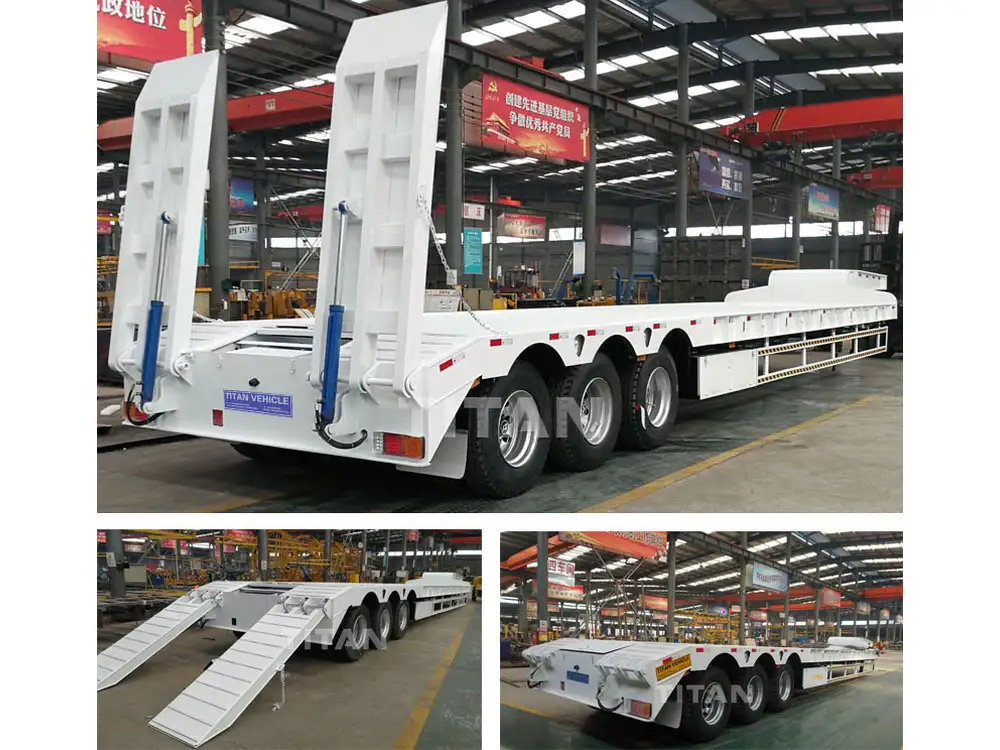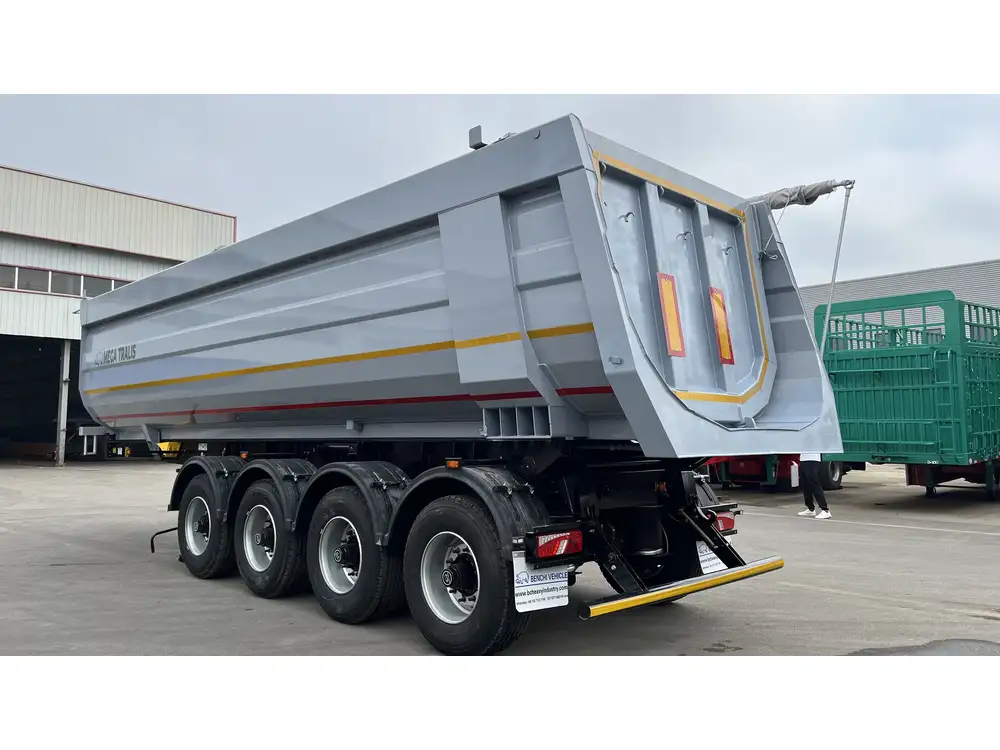Connecting a semi-trailer to a semi-truck requires precision, patience, and a thorough understanding of the various components involved in the process. This guide provides a detailed breakdown of the steps and considerations necessary to successfully hook up a trailer to your semi-truck, ensuring safety and efficiency.
Understanding the Basics of Trailer Coupling
Before diving into the actual steps of coupling a trailer to a semi-truck, it’s crucial to understand the key parts involved:
| Component | Description |
|---|---|
| Fifth Wheel | The coupling device mounted onto the tractor that connects to the kingpin of the trailer. |
| Kingpin | A vertical pivot pin mounted at the front of the trailer, which locks into the fifth wheel. |
| Tandem Axles | Two axles at the rear of the trailer that provide stability and weight distribution. |
| Brake Lines | Lines connecting the truck’s braking system to the trailer, enabling synchronized stopping. |
| Electrical Connector | Transmits power for lights and brakes from the truck to the trailer. |
Step-by-Step Process for Hooking Up a Trailer

1. Prepare Your Semi-Truck
Starting with a clean slate is essential for a successful coupling process. Here are the preparatory steps:
- Check Fluid Levels: Confirm that engine oil, coolant, and transmission fluids are adequate.
- Inspect the Truck’s Condition: Look for any signs of wear and tear on the tires, brakes, and lights.
- Ensure Safety Gear is Accessible: Equip yourself with safety cones, reflective triangles, and emergency signaling devices.
2. Positioning the Trailer
Accurate positioning of the trailer is fundamental for a smooth connection. Follow these guidelines:
Align with Precision: Position your semi-truck in a straight line with the trailer’s kingpin directly beneath the fifth wheel.
Utilize Spotters: If available, use a spotter to guide you into the right position. Communication is key to avoid any potential mishaps.
3. Engaging the Fifth Wheel
Once the trailer is properly aligned, engage the fifth wheel following these steps:

Adjusting the Fifth Wheel
Check Coupling Height: Ensure the fifth wheel plate is at an appropriate height for smooth engagement. Ideally, the plate should be set about 1 inch lower than the kingpin.
Adjust Fifth Wheel Slide (if applicable): Use the fifth-wheel slider mechanism to adjust for optimal positioning.
4. Connecting the Kingpin to the Fifth Wheel
Bringing the truck and trailer together requires careful execution:
Reverse Slowly: Gradually back up your semi-truck until the kingpin slides into the fifth wheel. Listen for a ‘clunk’ sound as the fifth wheel locks into place.
Confirm Lock Engagement: After backing up, check for any gaps between the fifth wheel and the kingpin to ensure a proper lock. Many fifth wheels have an indicator to show that they are securely engaged.
5. Secure the Connection
To guarantee a safe and effective hook-up, you must check and secure the connection:
Inspect the Fifth Wheel Lock: Visually confirm the fifth wheel locking mechanism is properly engaged around the kingpin.
Perform a Pull Test: Engage the truck’s brakes and try to drive forward slightly. If the trailer does not detach, the connection is solid.

Connecting the Brake Lines and Electrical Cables
1. Hydraulic and Air Brake Systems
Understanding your trailer’s braking system is vital:
| Type | Description |
|---|---|
| Air Brakes | Most heavy-duty trucks utilize air brakes; ensure that the air supply lines are correctly connected. |
| Hydraulic Brakes | Common in lighter trailers; make sure the couplings are securely attached. |
2. Electrical Connections
Connect the electrical harness:
Locate the Connector: The plug for lights and brakes is usually found near the rear of the tractor.
Ensure a Secure Fit: Insert the connector and ensure it snaps securely into place. This connection controls brake lights, turn signals, and other electrical functions.

Final Checks
Performing a final inspection is imperative before hitting the road:
Test Brake Functionality: Apply the truck’s brakes and verify that the trailer’s brake lights activate.
Inspect Lighting Systems: Ensure that all trailer lights, including turn signals and brake lights, are functional.
Check Trailer Connections: Ensure that all connections between the truck and trailer, including chains, cables, and air lines, are properly secured.
Safety Precautions to Consider
1. Personal Protective Equipment (PPE)
When engaging in any physical activity, wearing proper PPE is non-negotiable:
Safety Boots: Sturdy footwear can protect against injury from heavy equipment and uneven ground.
High-Visibility Clothing: Always wear high-visibility gear, especially in low-light conditions or when working near traffic.

2. Regulatory Compliance
Understanding and complying with federal and local regulations is essential for safe operations:
Weight Distribution Regulations: Ensure your trailer’s load adheres to legal weight limits to avoid penalties and enhance safety.
Inspect Before Operation: Regular maintenance checks and inspections are not only recommended but often mandated by law.
Troubleshooting Common Hook-Up Issues
Issues during the hook-up process can lead to frustration and delays. Here are common problems and their solutions:
Problem: Misalignment of Kingpin and Fifth Wheel
- Solution: Adjust the truck’s angle or reposition the trailer to achieve alignment. Utilize turn signals and communicate with a spotter if necessary.

Problem: Incomplete Lock Engagement
- Solution: If the fifth wheel does not fully engage, pull forward slightly and back up again. Check for obstruction on the fifth wheel and ensure there’s no excessive debris.
Problem: Sluggish or Unresponsive Brakes
- Solution: Inspect the air lines or hydraulic hoses for leaks and ensure connections are intact. Air systems may require a test release valve check.
Frequently Asked Questions (FAQs)

1. What should I do if the fifth wheel does not engage?
If the fifth wheel fails to engage, check for alignment and debris obstruction. Ensure that the height of the fifth wheel is set correctly.
2. How can I ensure the trailer lights are working correctly?
Before departing, test the lights by performing a light check—turn on lights, brake lights, and turn signals using the truck controls.
3. Is it necessary to perform a pull test each time I hook up?
Yes, performing a pull test is essential for safety. This ensures that the trailer is secure and will not detach while on the road.

Conclusion
Successfully hooking up a semi-trailer to your truck is a fundamental skill that demands attention to detail, safety awareness, and compliance with regulations. By following this comprehensive guide, you can enhance your understanding of the coupling process and ensure that you perform each step with confidence and precision.
Maximize your trailer and semi-truck efficiency through proper techniques and maintenance checks. The safety of your load, your equipment, and yourself relies on a secure and well-executed connection. Whether you are a novice or an experienced driver, revisiting the fundamentals of coupling can make all the difference in your operations and overall transport efficiency.



